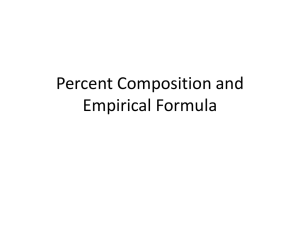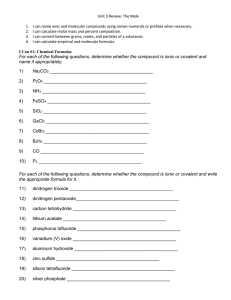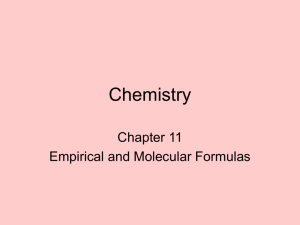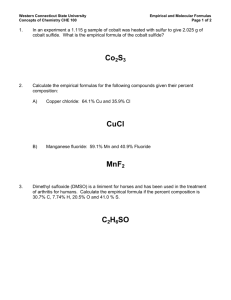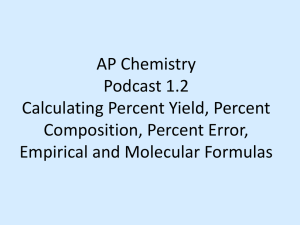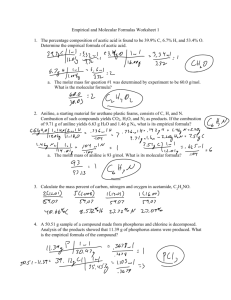3.4 Empirical Molecular Formulas
advertisement
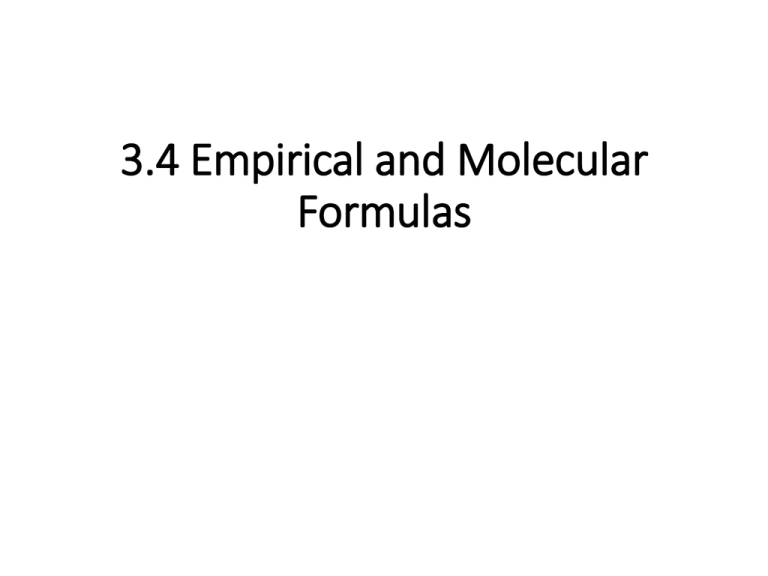
3.4 Empirical and Molecular Formulas Empirical and Molecular Formulas • How do we find a chemical formula for and unknown substance? • • • • Identify elements & # of atoms of each element Determine % composition by mass Convert mass values moles Formula = empirical formula • Empirical Formula • Simplest whole-number ratio of atoms or ions in a compound. Empirical and Molecular Formulas • An Empirical Formula does not necessarily provide correct information about the number of atoms in a molecule – only the ratio of atoms. • Different molecules may have the same % composition but contain different numbers of atoms • A Molecular Formula is needed to tell us the number and kind of atoms in a molecule. Empirical and Molecular Formulas • A Molecular Formula represents the number of atoms of each element that make up a single molecule of that compound. • Example Formaldehyde (poison) Acetic Acid (vinegar) Empirical CH2O CH2O Molecular CH2O CH3COOH Calculating Empirical Formulae • Convert % comp. data to mass data, assuming total mass is 100g. • Determine number of moles of each element, by dividing mass by molar mass • Convert # of moles into whole numbers by dividing each amount in moles by the smallest number • Use these as subscripts in formula Calculating Empirical Formulae - Example • A compound is 50.91% Zn, 16.04% P, 33.15% O. Find its Empirical Formula. Calculating Molecular Formulae • Determine Molar Mass of Empirical Formula • Determine Molar Mass of actual compound • Done experimentally – mass spec. • Divide experimental molar mass by empirical molar mass & multiply answer by each subscript. Determining Molecular Formula - Example • A compound with the empirical formula CH was analyzed using a mass spectrometer. Its molar mass was found to be 78 g/mol. Determine the molecular formula.
